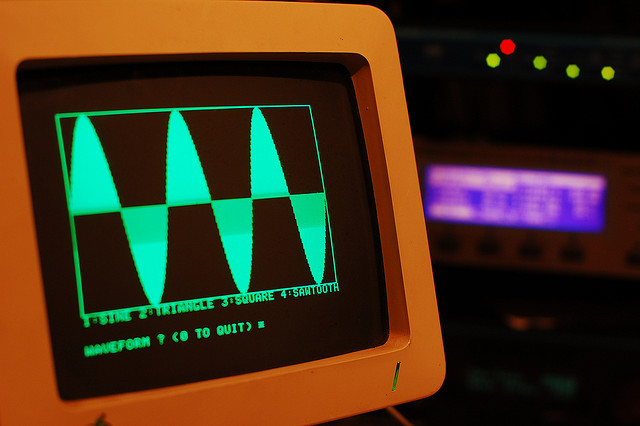
Global availability of music may not have silenced the usual gripes about musical quality and diversity, even if they should. But the Web is providing a place for people to share music with other music-making enthusiasts, sharing the craft of constructing it with the relish of chefs talking over drinks at the end of a long day.
Anyway, that’s my excuse for mentioning fellow blogger, music software developer and musician Chris Randall, again. I’ve been thoroughly enjoying the meticulously-concocted sounds of his new micronaut EP, Particulate. Ticking away leisurely, with thick alphaSyntauri pads set against cool, understated metrical rhythms, it’s the as though the machines themselves are enjoying a calm weekend afternoon.
On the Analog Industries blog, more description
Chris admits something I’ve been hearing increasingly in whispers among producers from a wide variety of genres – he’s getting away from the DAW. The dominant computer software model, even in more restrained incarnations like Ableton Live, still involves an overwhelming set of tools and sequencing apparatus that can get you away from, you know, actually playing your machines like instruments. Instead, Chris uses “good old-fashioned playing,” and gating from analog outputs from an Apple IIe-based sequencer. It’s nothing new (quite literally so, as the gear is from the 80s), but it’s a discipline to which I hear many producers return again and again. (I got to read them talking about it in the 80s and 90s, too, as I edited old Keyboard stories for an upcoming book – sometimes you have to turn the sequencers off and focus on really playing the machines. Think that bit in Star Wars with the flight computer.)
The gear:
Roland CMU-800R + Apple IIe (kids, ask your parents)
alphaSyntauri, also based on the Apple II
Korg 770, which has the best vintagesynth.com description ever: “Aside from being very old, there isn’t much else to say about the 770.” Assuming I take care of myself and survive to be a senior, this is I hope what I can someday make my epitaph.
Korg MS20, about which much could be said
Euro-Rack modular
Korg Monotribe
iPad running Curtis (granular app) + Alesis iO Dock
Lexicon M300 (now-discontinued hardware reverb), and ValhallaRoom and Chris’ own Eos, as reverb
I love the polish of the EP, but it’s also revealing to watch Chris tinker with his rack of gear, as in this more recent image:
By the way, for my part, I’m also enjoying not sequencing materials. If you don’t want to go to tape, you can take the same approach in any software. Hanging out with King Britt in his studio, he tracked live playing and CV-gated sequences into Ableton Live; I’ve taken to using Propellerhead Reason (formerly Record) for the same purpose. (Hint: that absence of MIDI output? It’s not a bug, it’s a feature.)
All of this is relevant, as there’s a big Synth Meet tomorrow in Los Angeles put on by those connoisseurs of analog, the blog (and sometimes-artists’-collective TRASH_AUDIO. And certainly the idea of investing in all this shiny is, eventually, to actually make something resembling music with it. Chris, look forward to seeing you tomorrow.
Also, fans of alphaSyntauri — I’ve been watching this growing, open group on Facebook devoted to that instrument:
The Alpha Syntauri Group
They point to a big load of documentation someone has collected.
Now I’m nervous, because typically when I ramble on about something like this, commenters get angry. It’s a Friday. Don’t hurt me. Go listen, and if you don’t like it, it’s a Big, Wide Internet. In fact, go make something.